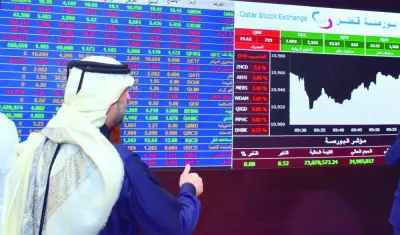The dollar is probably close to a peak after its recent surge, Oxford Economics said, but noted several factors, including rate differentials and global liquidity conditions, are likely to remain dollar supportive for some time.
“We expect only a gradual unwinding of dollar positives in 2022-2023 leading to a modest retreat – and there are still some short-term upside risks,” Oxford Economics said.
The dollar has surged in recent months, adding to a bull run that began in the early part of 2021. Since the start of last year, the real effective dollar exchange rate has risen by around 15%, and now stands at multi-year highs, it said.
Recent dollar gains have mostly resulted from a combination of favourable interest rate differentials, higher global financial stress causing 'safe haven' flows into US assets, and terms of trade shifts hitting competitor currencies.
Rate differentials are likely to remain supportive, but the researcher’s baseline forecasts suggest that factors like relative growth and stock price performance will be medium-term drags.
The dollar looks overvalued on various measures, but the extent of this varies greatly, with its ‘BEER-based estimates’ suggesting only around 3% overvaluation.
Moreover, the dollar has in the past remained well above fair value measures for lengthy periods - so current valuations are not obviously a bar to the dollar posting further near-term gains.
“Our dollar strength indicator, which combines a range of key influences, was clearly positive in 2021 and foreshadowed recent dollar gains. But our forecasts suggest the indicator moving to a neutral position in 2022 and turning negative in 2023. This is in line with our baseline forecasts for the dollar to stay strong this year and soften next,” Oxford Economics said.
It is often thought the dollar loses out in recessions, and the researcher’s analysis shows a 2-5% decline in the trade-weighted dollar is common in the early part of recessions.
However, outcomes have varied considerably in different recessions with the dollar gaining in some cases.
Possible upside risks to the dollar include more resilient US growth relative to the G7, better stock market performance and a more pronounced rate hike cycle than it currently expects. Overall, risks around Oxford Economics’ baseline dollar forecast look broadly balanced.
In Qatar, QCB adopted its exchange rate policy of hard pegging to the USD at an average price of QR3.64 per dollar. Following upward rate revision by the US central bank - Federal Reserve (Fed), QCB recently raised the QCB Deposit Rate (QCBDR) by 75 basis points to 3%, QCB Lending Rate (QCBLR) by 50 basis points to 3.75% and QCB Repurchase Rate (QCB Repo Rate) by 75 basis points to 3.25%.
“We expect only a gradual unwinding of dollar positives in 2022-2023 leading to a modest retreat – and there are still some short-term upside risks,” Oxford Economics said.
The dollar has surged in recent months, adding to a bull run that began in the early part of 2021. Since the start of last year, the real effective dollar exchange rate has risen by around 15%, and now stands at multi-year highs, it said.
Recent dollar gains have mostly resulted from a combination of favourable interest rate differentials, higher global financial stress causing 'safe haven' flows into US assets, and terms of trade shifts hitting competitor currencies.
Rate differentials are likely to remain supportive, but the researcher’s baseline forecasts suggest that factors like relative growth and stock price performance will be medium-term drags.
The dollar looks overvalued on various measures, but the extent of this varies greatly, with its ‘BEER-based estimates’ suggesting only around 3% overvaluation.
Moreover, the dollar has in the past remained well above fair value measures for lengthy periods - so current valuations are not obviously a bar to the dollar posting further near-term gains.
“Our dollar strength indicator, which combines a range of key influences, was clearly positive in 2021 and foreshadowed recent dollar gains. But our forecasts suggest the indicator moving to a neutral position in 2022 and turning negative in 2023. This is in line with our baseline forecasts for the dollar to stay strong this year and soften next,” Oxford Economics said.
It is often thought the dollar loses out in recessions, and the researcher’s analysis shows a 2-5% decline in the trade-weighted dollar is common in the early part of recessions.
However, outcomes have varied considerably in different recessions with the dollar gaining in some cases.
Possible upside risks to the dollar include more resilient US growth relative to the G7, better stock market performance and a more pronounced rate hike cycle than it currently expects. Overall, risks around Oxford Economics’ baseline dollar forecast look broadly balanced.
In Qatar, QCB adopted its exchange rate policy of hard pegging to the USD at an average price of QR3.64 per dollar. Following upward rate revision by the US central bank - Federal Reserve (Fed), QCB recently raised the QCB Deposit Rate (QCBDR) by 75 basis points to 3%, QCB Lending Rate (QCBLR) by 50 basis points to 3.75% and QCB Repurchase Rate (QCB Repo Rate) by 75 basis points to 3.25%.




